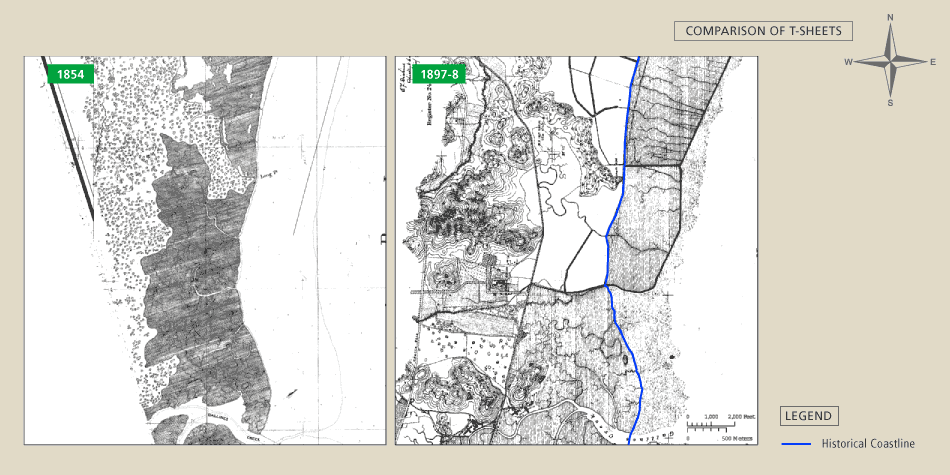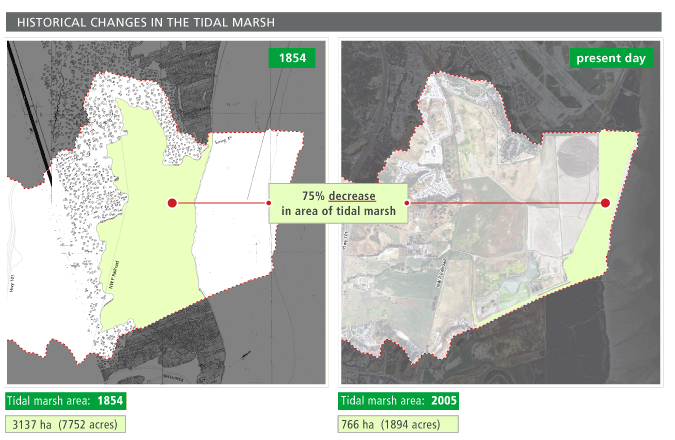
8 The Changing Landscape

In this section
Changes in the Baylands
Rapid deposition of Sierran mining sediments and the construction of dikes to reclaim land for agriculture created major changes in the baylands and transformed the historical landscape. Natural tidal channels were filled and replaced with engineered flood control channels.
New Baylands
 |
Euro-American land use has drastically altered the amount and location of these three habitat types. Most of the alteration was due to local land uses. But, the baylands are also affected by more distant land uses that alter conditions of the larger Bay. Hydraulic mining in the Sierra Nevada from the 1850s-70s eroded tremendous amounts of fine sediment that was delivered to the Delta and San Pablo Bay by Sierran rivers. The Bay became more shallow and new tidal flats extended more than a mile into the Bay. Enterprising settlers captured this sediment behind new dikes and levees, reclaiming it for agriculture.
Sinking Bay Lands
The historical tidal marsh nearest Miller Creek was the first local bayland to be reclaimed. Levees were added to reclaim the new tidal marsh and flats as they developed. The peaty sediments of tidal marsh tend to shrink and oxidize if they dry. This causes the diked marshes to subside so that now most of the diked baylands are lower than high tide. The naturally winding marsh channels have been replaced with straight ditches and pumps to efficiently drain the subsided baylands. Faint images of the historical channels can be seen in aerial photography due to persistent differences in soil color and texture between the natural channels and the adjacent historical marsh plain.
